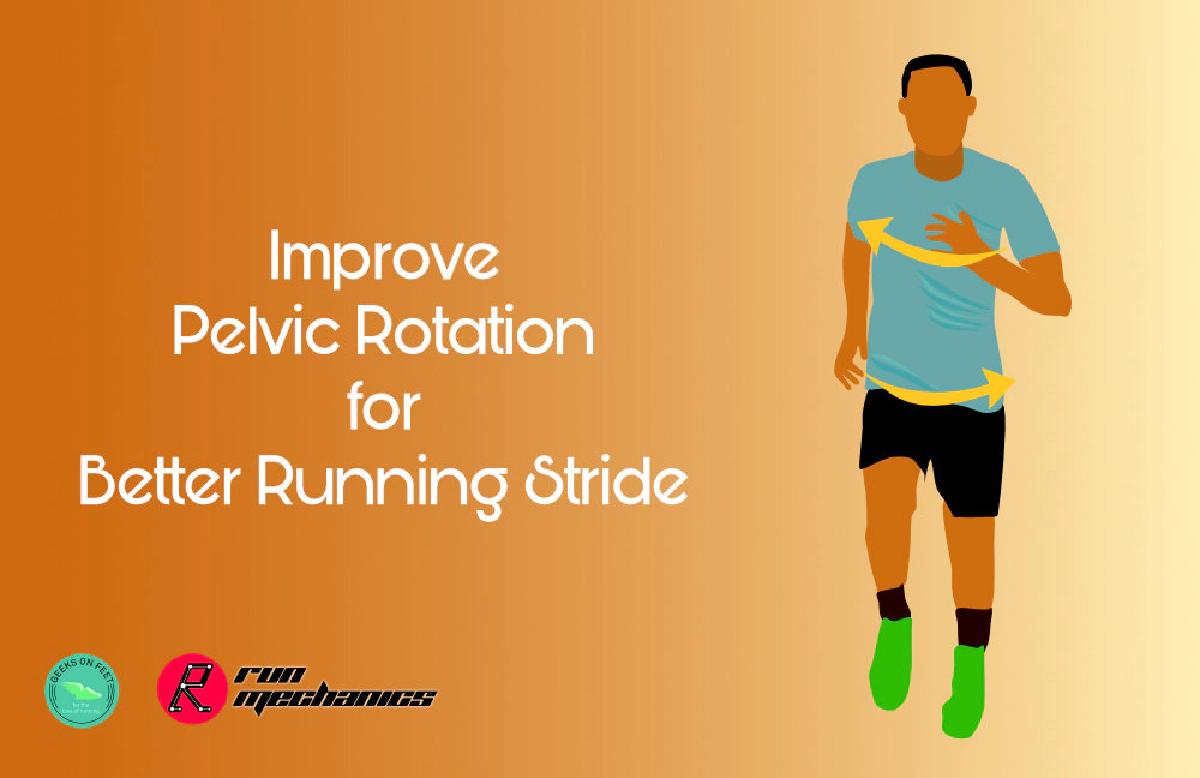
As runners, we put a lot of focus on the foot, ankle, and knees. We look for things like foot strike, foot pronation, and ankle dorsiflexion. However, much of the running performance is decided higher up the chain, that is by the muscles of the core and hips.
In the past articles, we touched on Hip Extension and Pelvic Drop which are important for efficient running form and performance. In this article, we cover “Pelvic Rotation”, which is another important aspect of the hip that affects our running stride.
When you see a runner from the front, you cannot miss the rotation of the upper body. You can see the elbow rotating towards the midsection of the chest. Good running form involves rotating the upper body (& trunk) in and out for every stride while keeping the core stable. In the picture below you can see an arrow at the top indicating the left elbow moving in. What we probably don’t notice is the rotation of hips in the opposite direction. This rotation happens because the pelvis is rotating in the opposite direction of the trunk to accommodate the full stride. See the bottom arrow in the picture below. Pelvis and Trunk coordinate every stride with rotations countering each other to make the forward running motion possible.
Race walking is a sport where the importance of Pelvic Rotation is very evident. Since the athlete cannot bend knees and has to be in contact with the ground all the time, pelvic rotation is the primary way to increase the stride in race walking. In running, however, there are more ways to increase stride, including more power from the hip extension, and better flight. Apart from these Pelvic Rotation also plays an important role in running, which is often ignored.
At RunMechanics we used 3D IMU sensors to measure pelvic roation and analyzed runners of varying speeds; sub 3 hours to sub 6-hour marathon finishers. Here are some observations we had which correlate Pelvic Rotation, Cadence, and Speed.
Pelvic rotation is often limited by the poor mobility of muscles in the hips and lumbopelvic region. More specifically lacking mobility that limits the hip internal rotation. There are a variety of mobility drills to improve the hip internal rotation. We highly recommend the mobility drills suggested by Kelly Starret (author of book Supple Leopard). Here are a few videos that explain these drills.
Lunge with torso twist is another workout that works on hip internal rotation while working on the trunk rotation in the opposite direction.
Courtesy: Team Run Mechanics. This article was first published on runmechanics.in
If you are a running enthusiast, follow us on our social media channels @geeksonfeet on Twitter, and GeeksOnFeet on Instagram and Facebook for updates. Also let us know what running topics you would like to read on.